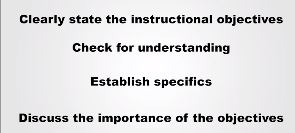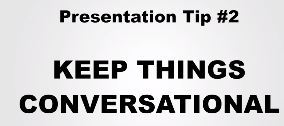Week 1 Basic Instructional Design
A teacher is a listener, a helper, a coach, a psychologist and an evaluator
Robert Gagne's Events of Instruction
we shared the 80 / 20 rule which informed us of the goal of presenting information only 20% of the time, while allowing students practice 80% of the time.
When you present content, make sure you do so in a lively engaging manner. A way that draws students in, and makes them motivated to learn more. Clear explanations, warm language that invites students to problem solve with you, the use of story and metaphor. All of these techniques can help you to present language in a pleasing manor.
Employing "Good Talk" and "Warm Language
https://www.coursera.org/learn/lesson-design/supplement/bxm9y/bonus-reading-employing-good-talk-and-warm-language
Week 2: Objective Discussions and Warm-up
Writing objective
- think about what the students will do after activities to demonstrate that learning has occurred.
- Make your objectives observable and measurable.
- Does it matter?
Many new teachers confuse an objective with an activity. An activity may be a way in which to achieve an objective, but an activity itself cannot, and should not, be considered the same as an objective. This is because an objective represents the ends of instruction, the results. Not the instruction itself. An objective should clearly specify what the results of the activity should be, not simply share what the activities are.
Students will listen to a song about colors of the rainbow.
Students, when shown a rainbow, will correctly label all the colors.
Notice that the first sentence sounds like a great activity to help students learn about the colors of the rainbow, but it isn't really an objective at all. The second is an objective. Notice that it has something demonstrable, something students can do which leads me to my first tip about objectives.
Teachers often use words like no, believe, feel, and understand, which are states of the mind or heart and impossible to observe. Action words, such as identify, state, demonstrate, and create are preferred when writing objectives.
Corpus Linguistics can help you to determine the frequency of certain phrases or grammatical items. Did you know, for example, that the most common 2,000 words in all of English represent almost 80% of all speech? 3 tenses in English account for 98% of all published text.
We discussed the fact that objectives are often set by administrators who create curriculum guides, or by publishers and authors who put out text books, but that lesson plan objectives are often best served by being put into the hands of teachers based on the purposes and needs of their learners
Week 3: Presenting Instruction and Modeling
MUD: Memorable, meaning students can recall the information. Usable, meaning students can use the information as a vital life skill, and durable, meaning students can, even after a long period of time, still recall and use the information.
Research into the psychology of learning tells us that we remember things better when we have an emotional connection to it. Telling a story from your life to illustrate a point, for example, is a great way to connect with your students and help them connect what you are trying to teach them.
teacher talk refers to your ability to talk to students, clearly, carefully and with attention to details. Teacher talk refers to the myriad of techniques such as repetition, board work, asking questions, and relating information to student's prior knowledge. Clarification, elaboration, and the use of metaphors and analogies all help a teacher to convey information in a way that is clear and sticky.
keeping things conversational refers to your ability to get students themselves to talk, clearly, carefully and with an attention to details. First, how you talk. Second, how others talk.
teach, model, and question
Model, infer, and elaborate (Teaching Using Inductive Reasoning.)
The idea behind modelling is that instruction is often enhanced with clear examples and illustration. We use the concept of watching someone make a paper airplane rather than just being told how to make a paper airplane. The model is often what sticks in someone's head even more than the instruction. Because of that reality, we gave two suggestions. First, give more than one model and second give models later in the process.
There are really only two types of learning you can measure.
- Memory, sometimes also called recall
- knowledge. (performance based assessment)
performance based assessments have several important characteristics. First, they must be authentic or as close to real world situations as possible. Second they should require a constructed response and not be simple multiple choice or yes no types of questions and third they should involve higher order thinking skills. Requiring students to analyze information, evaluate ideas, and create a response.


I was creating a rubric for a writing assignment, I may want to assess students' grammar, spelling, and punctuation. But I may also want to assess their ability to connect ideas together to support an argument. So I would put Grammar or Mechanics and Cohesion as two of my grading categories. In assessing these categories, I would want to think about the characteristics of great, good, average, and poor mechanics or cohesion. I would put these levels across the top and list the individual characteristics in the boxes of the matrix. For example, I might describe great mechanics in this way.
No more than two grammar, spelling or punctuation errors, no more than four errors combined.
Good mechanics in this way. No more than three grammar, spelling or punctuation errors, no more than seven errors combined.
Summary:
We also told you that there are two types of learning. Memory and knowledge, and stress that while both are important in certain situations, most communicative teachers focus more on? Knowledge learning rather than memorization. You can use authentic performance-based assessments to measure students' knowledge learning. Your assessments should require students to analyze information, evaluate ideas, and create a response to demonstrate their ability. Include plenty of formative assessment before asking students to perform for a grade, especially if decisions that affect your students will be made based on the results of your assessments.
We also shared some important assessment ideas to make your life easier including clear rubrics and examples of student work done in the past.










No comments:
Post a Comment